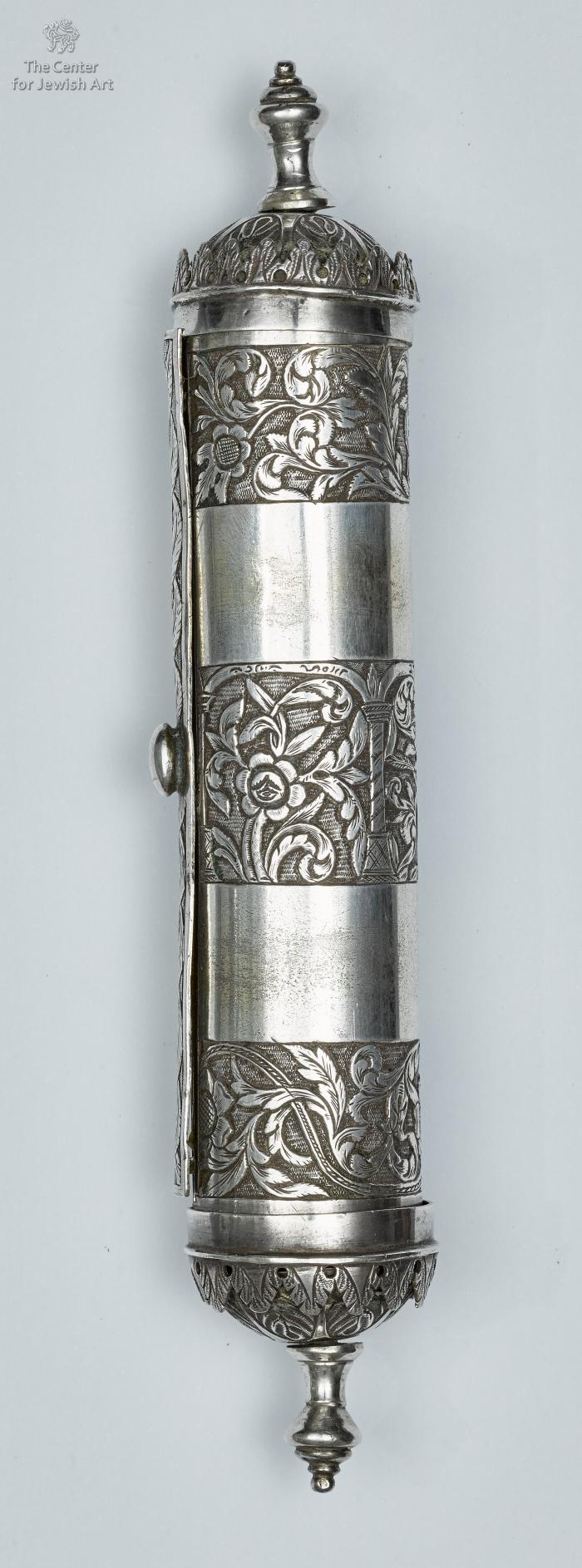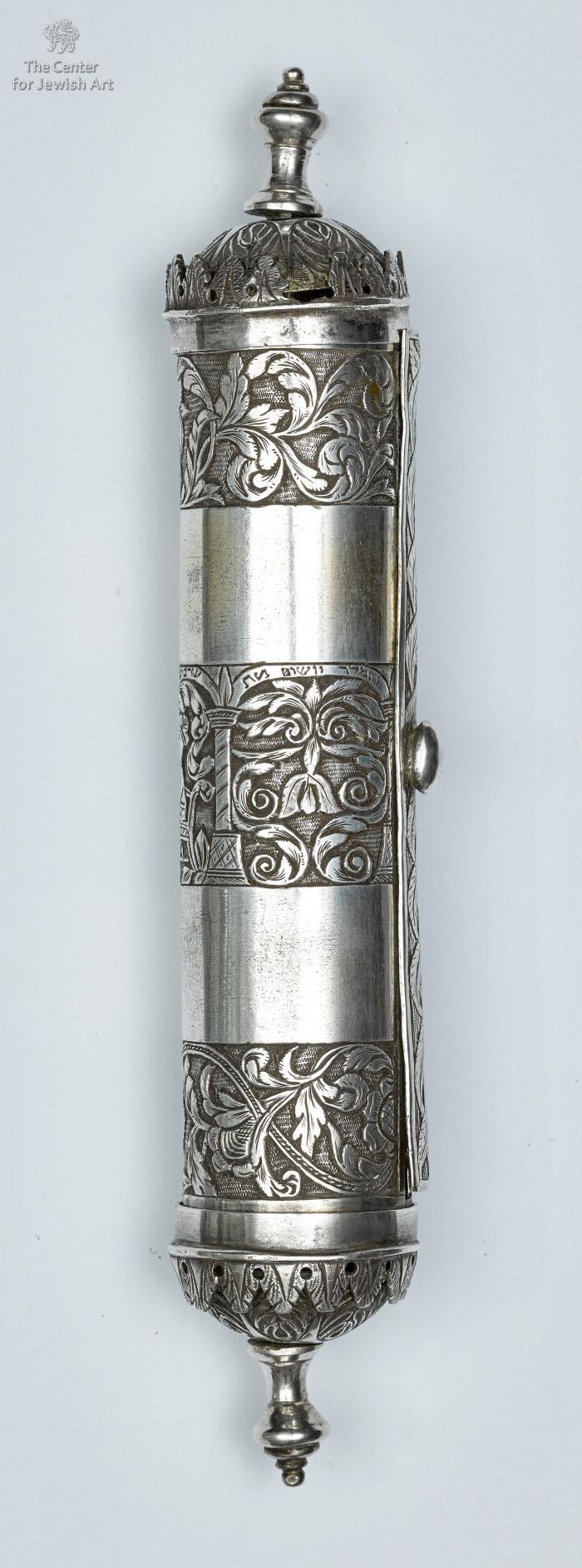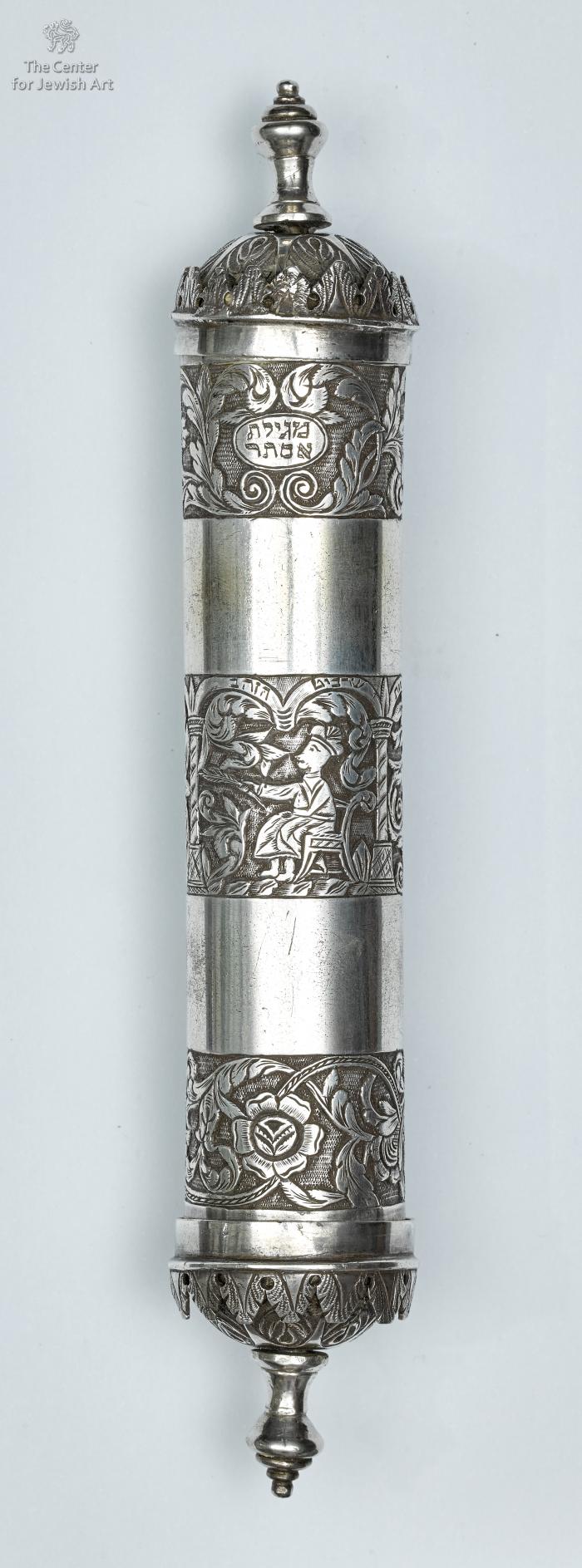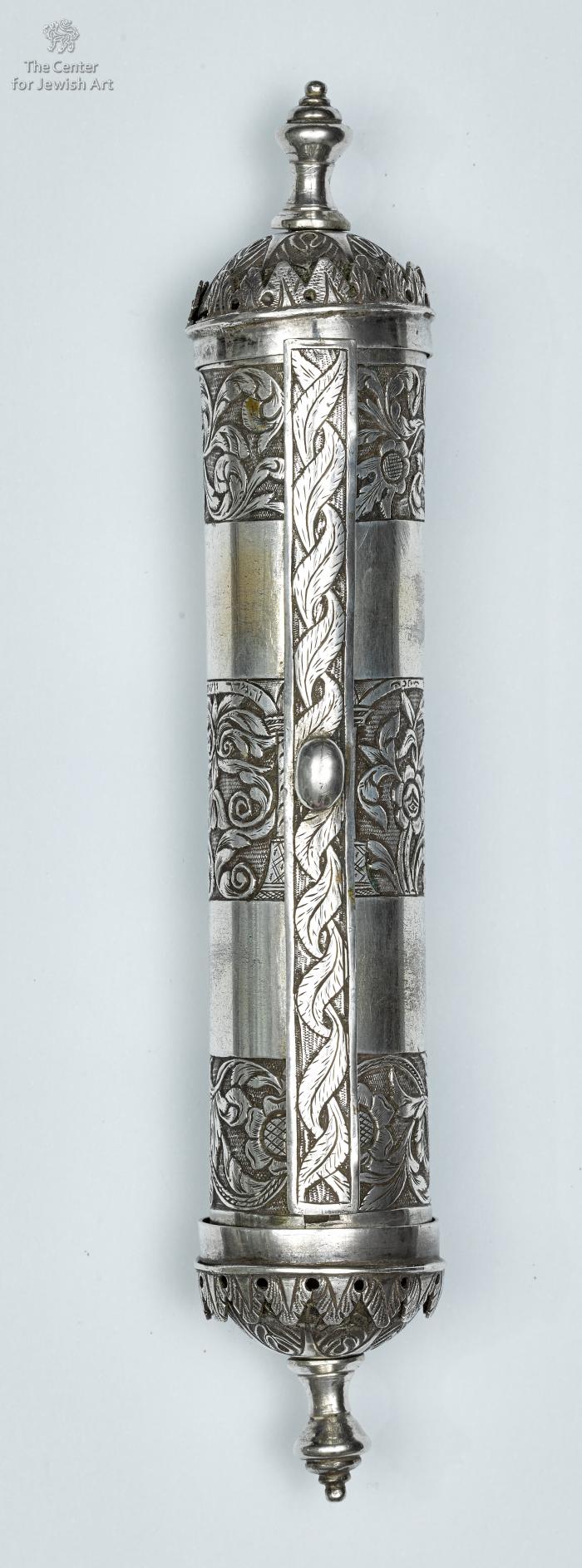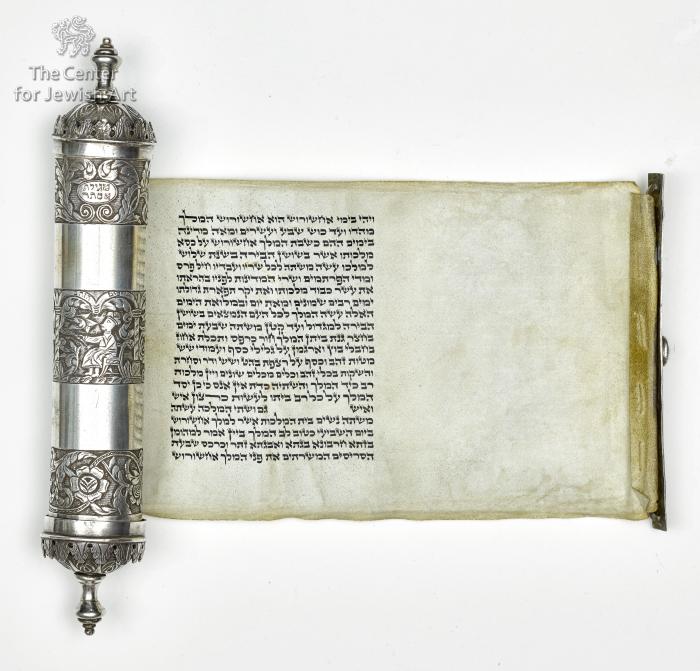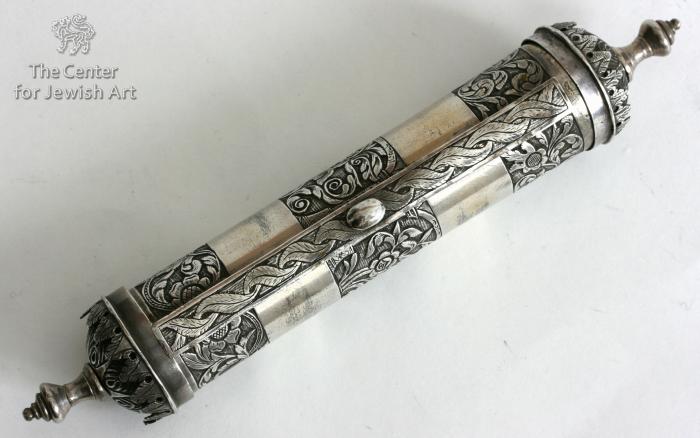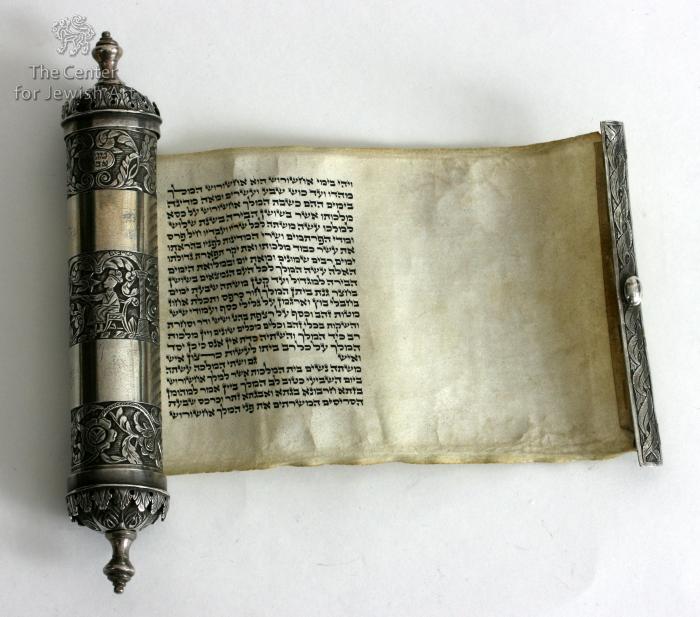Obj. ID: 40928 Esther scroll case, Ukraine, circa 1875

sub-set tree:
The following description was prepared by William Gross:
The Scroll of Esther tells the story of the salvation of the Jews of the Persian Empire. Since the Talmudic period it has been customary to write the Book of Esther on parchment in the form of a scroll, and the rules governing its production and writing are basically the same as those for a traditional Torah scroll. It is not known when and under what circumstances artistic embellishment of Esther scrolls began. The earliest extant illuminated Esther scrolls emanate from 16th-century Italy, commissioned by well-to-do Italian Jews. Cylindrical or polygonal cases were often made to house such scrolls, often provided with a crank handle to roll the parchment through a vertical slot. Cases were made of copper, tin, and wood, but fine silver and some ivory cases have survived as well. Such containers for the scroll were mostly produced in Italy, Austria and the Ottoman Empire.
This lovely Esther Scroll case carries the rather deeply carved decoration found on a small number of cases of Galician origin. This case comes from the family of the Apter Rebbe and is said to have belonged to him. The typical Galician scroll case did not have a long winding handle, but rather two equal decorative elements on the two ends. This is a rare example carrying an image almost literally carved into the case. The scroll, written on parchment with a script known from the area, is original. There are similar fine examples in the Stieglitz collection now in the Israel Museum.
Inscriptions
Megillat Esther.


